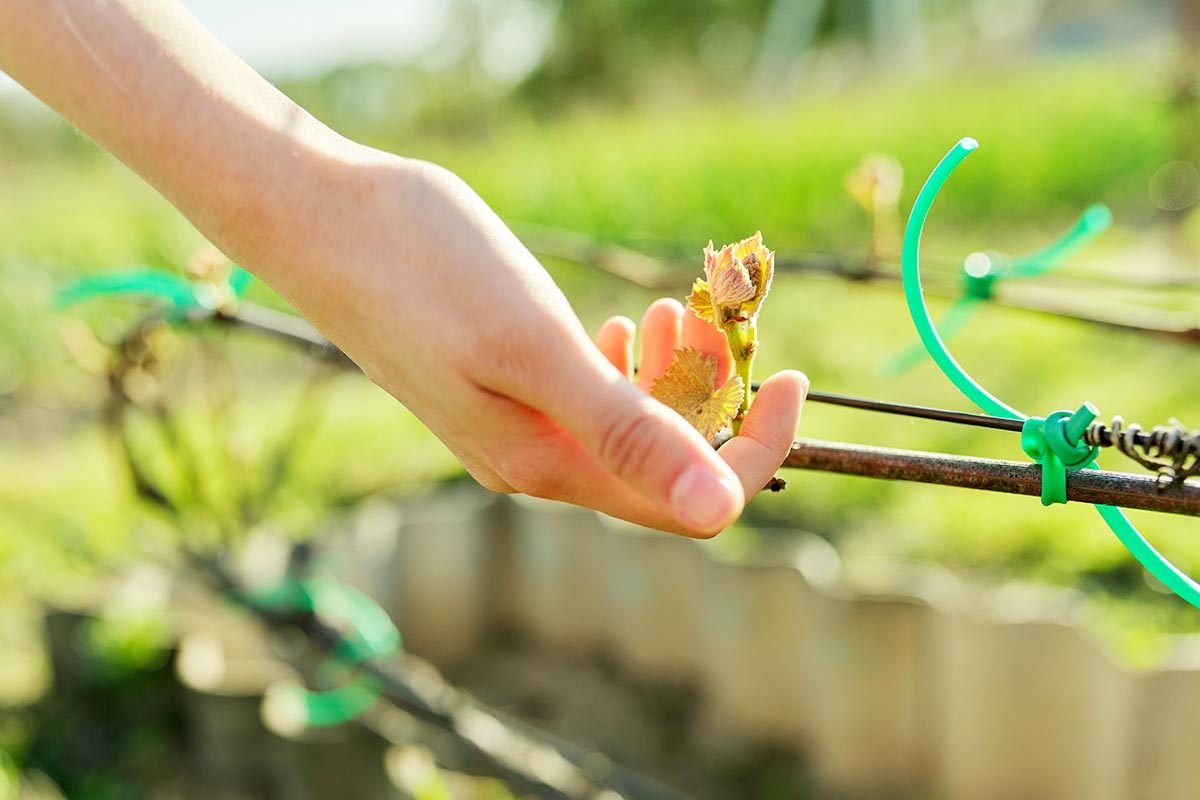Bud Break
Winter lays her hand lightly over the Napa Valley. Temperatures rarely drop below 35º Fahrenheit, and rarely rise above the mid-50s; rains blow in from the Sonoma coast or up from San Pablo Bay, interspersed with days of brilliant sunshine. In this combination of sun and rain, the hillsides around the valley turn green, often sheeted with the colors of wildflowers: the blues of toadflax or lupines, the clear yellow of California poppies, bright red Indian Paintbrush. Most spectacularly, regiments of deep yellow mustard spring up between the rows of grapevines. The dark, dormant vines are keeping their secrets deep, so from a distance the vineyards look as though they have been pin-striped, yellow and dark brown.
The most essential of the vine's secrets are the buds, the engines of next year's growth and next year's crop. The buds developed during the previous summer, lying between the vine's stem and the stems of leaves. During the summer they were green and covered with scales, but winter turned these scales brown and hard, protecting next year's growth from the vagaries of winter weather.
Winter raises her hand from the Valley in April, and the rainy season draws to a close. As the temperature warms to over 50º Fahrenheit, and if the vines have been pruned during their dormancy, they "bleed." Warming soil and the forces of osmosis push water up from the root stem, where it drips from the cuts left when the vine was pruned. The water contains low concentrations of organic acids, minerals, hormones, and sugars. At times, a single vine can " bleed" over a gallon of water a day.
Now winter's tiny, protected buds begin to swell. Inside each one are three shoots which, powered by the carbohydrate stored in a vine's roots and wood, stretch and grow, and the buds open. The shoots form tiny leaves that begin the process of photosynthesis, drawing growth energy from the energy of the warming sun itself, and as the sun warms the land, these shoots can grow an average of an inch a day. This annual miracle is called "bud break," and vintners keep an attentive eye on it. Vines that break too early are at risk of unseasonal cold snaps, damaging the prospect of the future crop (Chardonnay grapes are at special risk here). If the vineyards are hit with a late frost, its managers can use heaters or fans to keep icy air from settling onto the vines.
Soon after bud break, in what sometimes seems like the turn of one day to the next, the vineyards stretch long green arms along the hills of the Napa Valley, new leaves reaching for the sun. Even as the wild mustard between the vines and the wildflowers on the hills fade back, Napa basks under Spring's gentle hand. The vintners and laborers, too, prepare to put aside winter's tasks and enter the cycle of blossom, fruiting, harvest, and crush.
Winter is over. For humans and plants, the work of spring and summer can begin.
- Yao Family Wines




